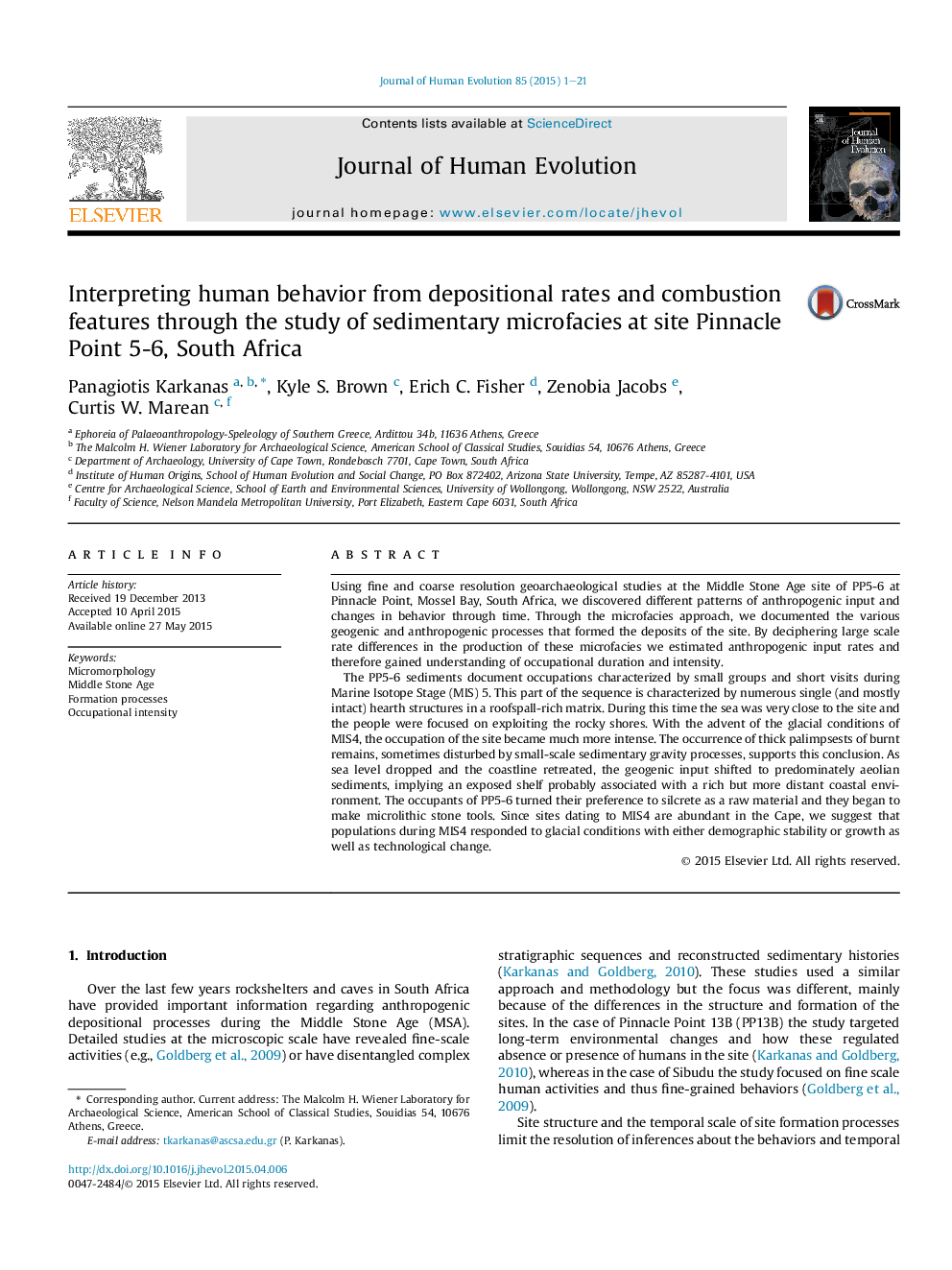| Article ID | Journal | Published Year | Pages | File Type |
|---|---|---|---|---|
| 6389140 | Journal of Human Evolution | 2015 | 21 Pages |
Abstract
The PP5-6 sediments document occupations characterized by small groups and short visits during Marine Isotope Stage (MIS) 5. This part of the sequence is characterized by numerous single (and mostly intact) hearth structures in a roofspall-rich matrix. During this time the sea was very close to the site and the people were focused on exploiting the rocky shores. With the advent of the glacial conditions of MIS4, the occupation of the site became much more intense. The occurrence of thick palimpsests of burnt remains, sometimes disturbed by small-scale sedimentary gravity processes, supports this conclusion. As sea level dropped and the coastline retreated, the geogenic input shifted to predominately aeolian sediments, implying an exposed shelf probably associated with a rich but more distant coastal environment. The occupants of PP5-6 turned their preference to silcrete as a raw material and they began to make microlithic stone tools. Since sites dating to MIS4 are abundant in the Cape, we suggest that populations during MIS4 responded to glacial conditions with either demographic stability or growth as well as technological change.
Related Topics
Life Sciences
Agricultural and Biological Sciences
Ecology, Evolution, Behavior and Systematics
Authors
Panagiotis Karkanas, Kyle S. Brown, Erich C. Fisher, Zenobia Jacobs, Curtis W. Marean,
